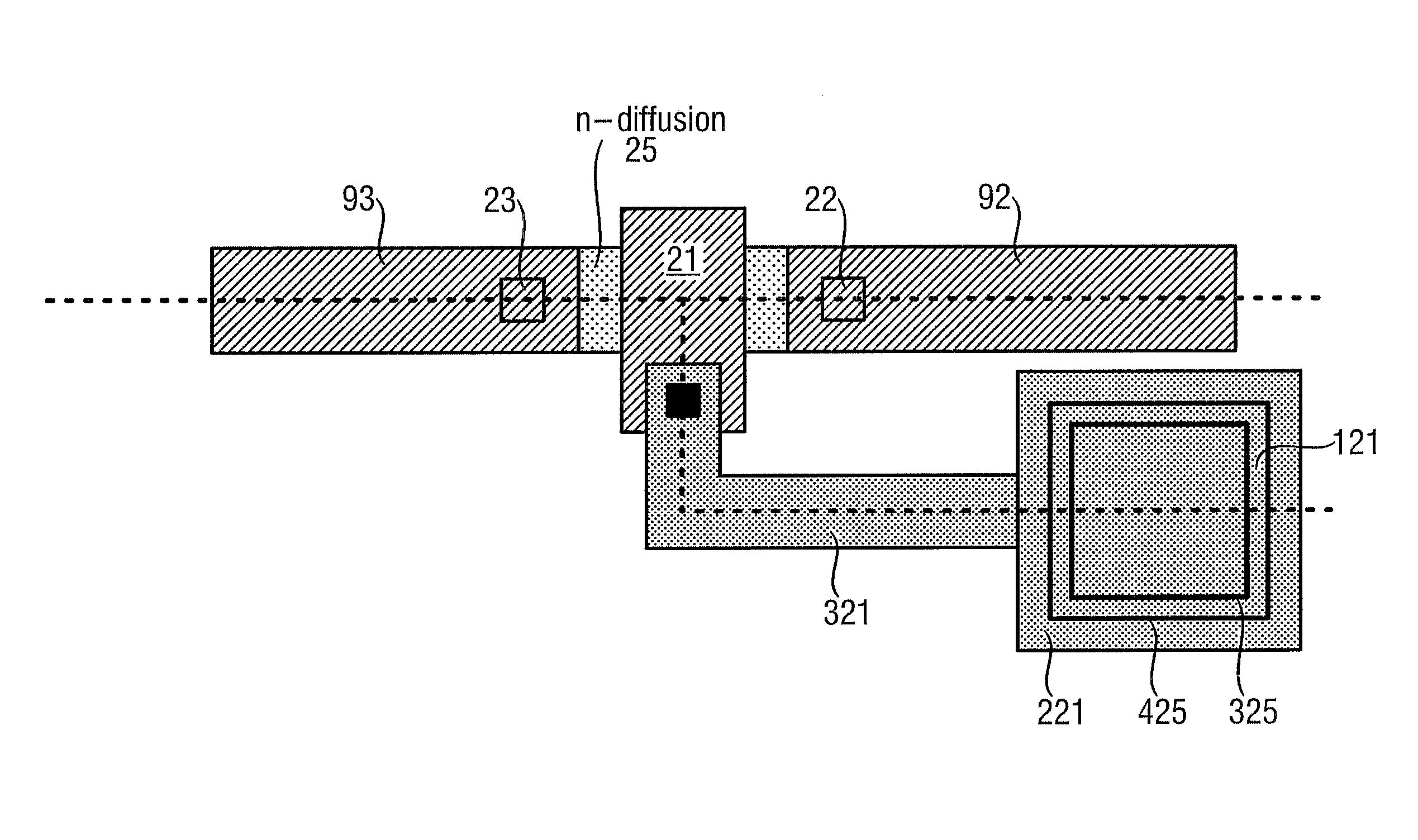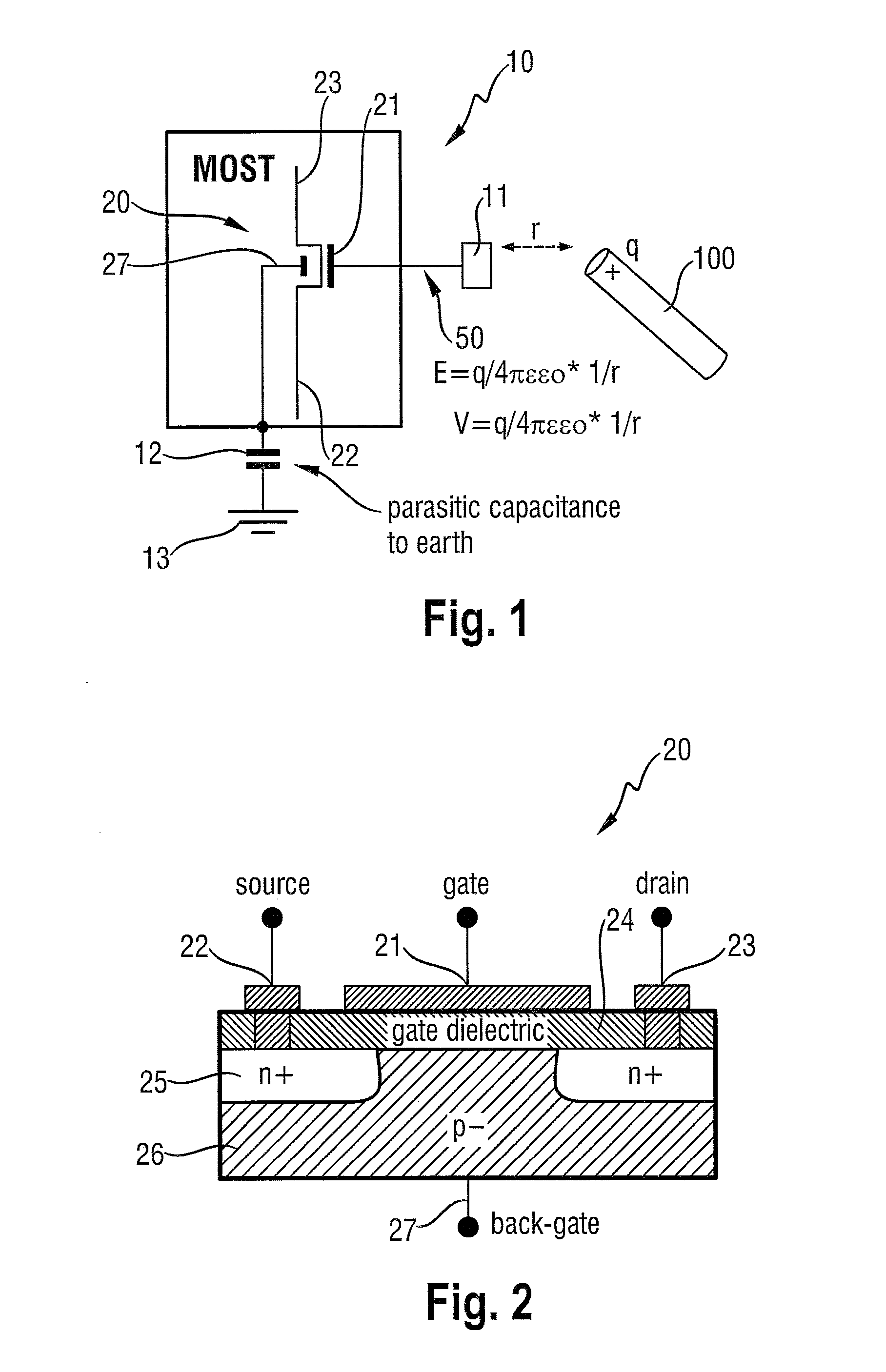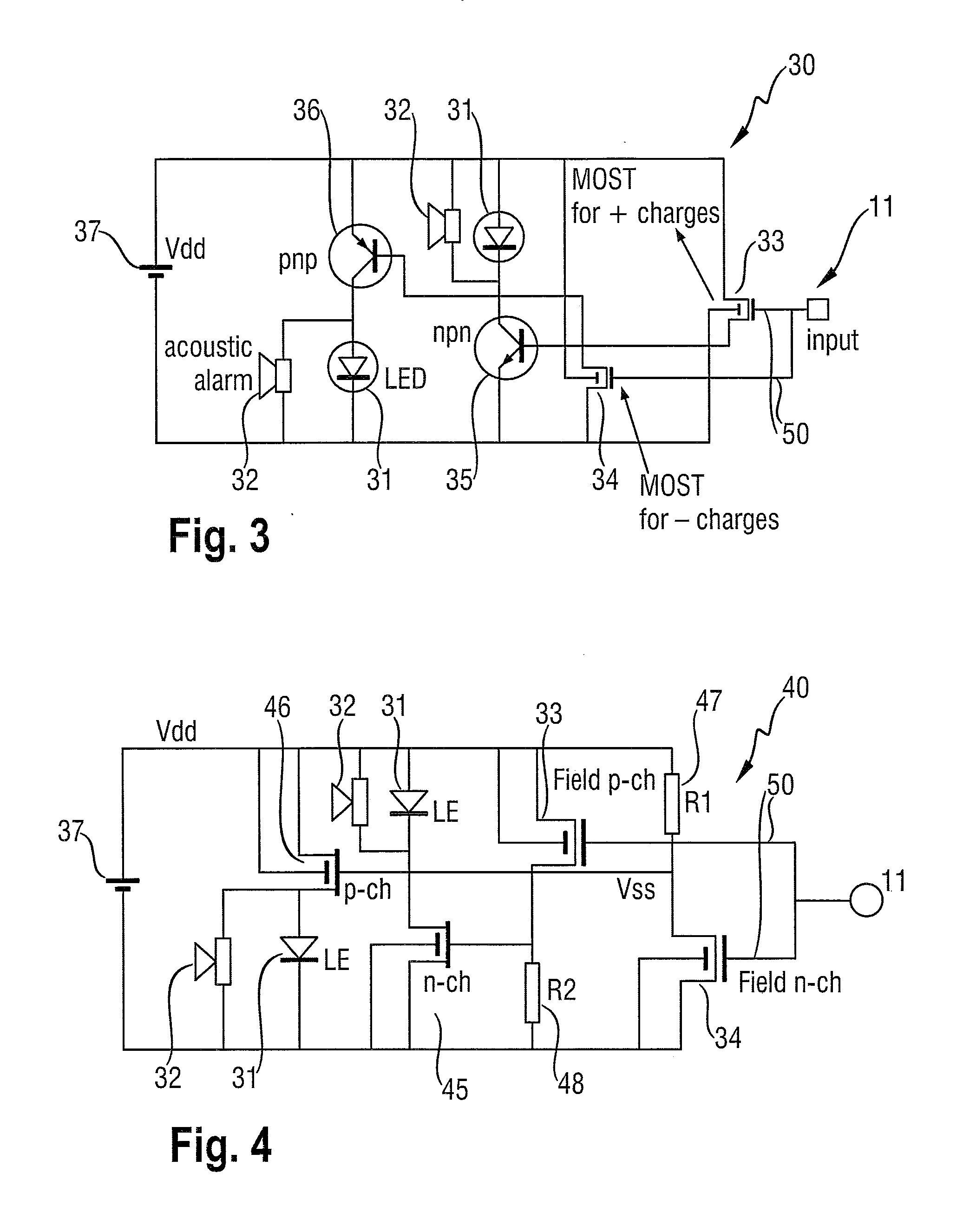Device to Detect and Measure Static Electric Charge
- Summary
- Abstract
- Description
- Claims
- Application Information
AI Technical Summary
Benefits of technology
Problems solved by technology
Method used
Image
Examples
Embodiment Construction
[0035]FIG. 1 shows the physical principle of the ESCM (Electrostatic charge monitor) 10 according to the invention in front of an object 100 with a charge q, being positioned in a distance r from device 10.
[0036]The ESCM is an electronic device 10 able to detect positive and negative charged objects. Any charged object 100 put in the vicinity (distance r) of the ESCM will induce an electric field and this in turn will produce an increase in the potential of the input electrode 11 of the ESCM. The physical principle of operation is based on charging of the gate electrode 21 of a MOS transistor 20. The amount of charge induced on the gate electrode will be Vgs*Cox, where the Cox is the gate electrode capacitance. When a charged object 100 approaches—via the electrode 11—the gate 21 of the MOS transistor 20, the potential of the gate 21 will change due to the electrical field produced by the charged object 100. In principle, the input electrode can consist of any conducting material. T...
PUM
 Login to View More
Login to View More Abstract
Description
Claims
Application Information
 Login to View More
Login to View More - R&D
- Intellectual Property
- Life Sciences
- Materials
- Tech Scout
- Unparalleled Data Quality
- Higher Quality Content
- 60% Fewer Hallucinations
Browse by: Latest US Patents, China's latest patents, Technical Efficacy Thesaurus, Application Domain, Technology Topic, Popular Technical Reports.
© 2025 PatSnap. All rights reserved.Legal|Privacy policy|Modern Slavery Act Transparency Statement|Sitemap|About US| Contact US: help@patsnap.com



